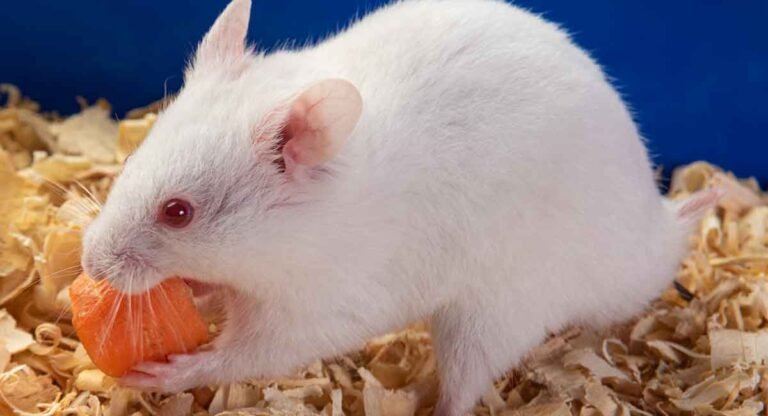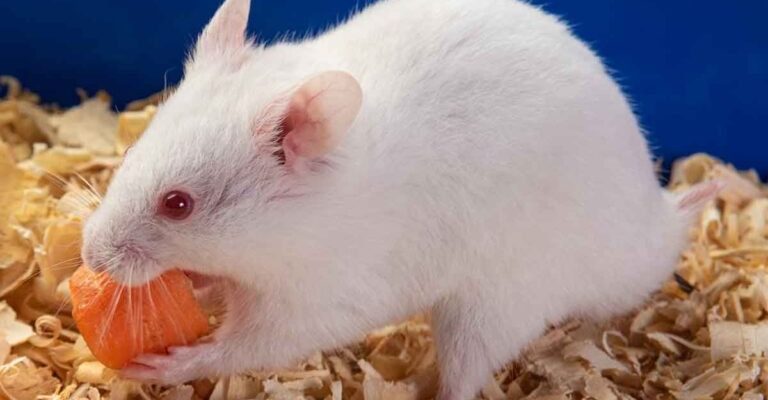
You might be wondering why albino Syrian hamsters are so special. These little guys stand out not just because of their striking white fur and tiny pink eyes, but also because of their friendly, curious nature. Breeding them requires knowledge, care, and a genuine love for these adorable creatures. So, grab a cup of coffee, and let’s explore what you need to consider before embarking on this journey.
Understanding Albino Syrian Hamsters
Albino Syrian hamsters, also known as golden hamsters, are a popular breed among pet lovers. Unlike their more colorful counterparts, these hamsters have a unique genetic makeup that gives them their distinctive coloration. The albino trait is a simple recessive gene, meaning that both parents must carry this gene for any offspring to be albino.
These hamsters are typically very affectionate and can become quite attached to their owners. If you’ve ever had a hamster climb into your palm or run through your fingers, you know how endearing they can be. They’re mostly nocturnal, which means they are most active at night—a fun fact for night owls but a consideration for their care and interaction.
Overall, understanding their genetic background can help you in the breeding process. Knowing what traits you’re aiming for can guide your selection of breeding pairs.
Setting Up for Breeding
Before you even think about breeding, your setup needs to be just right. Think of it like preparing a cozy little nest—the better the environment, the better the outcome. You’ll want a spacious cage that allows them room to roam and nest. A cage that’s at least 24 inches long is ideal.
Here are some essentials for your breeding setup:
- A secure cage with no sharp edges.
- Clean bedding, such as aspen or paper-based material.
- Food and water bowls that are easily accessible.
- Various toys for mental stimulation.
- A hiding place or nest box for privacy.
Also, consider the temperature of the room. Hamsters prefer conditions that are not too hot or too cold—ideally between 65°F and 75°F. Keeping a consistent environment can help reduce stress for the breeding pair.
Choosing the Right Pairs for Breeding
When it comes to breeding *albino Syrian hamsters*, selecting the right pairs is crucial. You should start with healthy hamsters that are at least 4-6 months old, as this age is ideal for breeding.
Aim for genetic diversity by choosing hamsters from different bloodlines, if possible. This helps prevent health issues that can arise from inbreeding. When looking at potential mates, pay attention to their size, health, and temperaments. A calm and friendly hamster will likely pass on those traits to their young.
Remember, it’s not just about looks. Healthy hamsters are vital for producing healthy offspring. If a hamster has any signs of illness or genetic disorders, it’s best to steer clear.
The Breeding Process
You’ve set everything up and selected your pairs—now what? The actual breeding process can be as simple as letting nature take its course, but there are a few details to keep in mind.
Once pairs are introduced, monitor their interaction. You might see them nuzzle or groom each other, which is a good sign. It’s essential to provide a quiet, stress-free environment during this time, as stress can lead to aggression or a refusal to mate.
After successful mating, the female will typically become pregnant in about 16 days. A pregnant hamster might show signs of nesting behavior, such as digging or gathering bedding materials. It’s essential to keep her comfortable and provide plenty of healthy food during this time.
Care and Socialization of Gravid Hamsters
When you find out your female hamster is pregnant, her care should be your top priority. This means no unnecessary handling or stress while she prepares to give birth. Create a nesting box filled with clean bedding where she can feel safe and secure.
Here are some care tips for a pregnant hamster:
- Ensure she has plenty of high-quality food rich in protein.
- Keep her cage clean but avoid disturbing her too often.
- Provide fresh water at all times.
After the babies are born, you’ll want to minimize handling. Mama hamster will naturally take care of her litters. You might be surprised to learn that a typical litter can consist of anywhere from 6 to 12 babies!
Post-Breeding Responsibilities
Once the babies arrive, it’s a whole new world of responsibility. Baby hamsters are called pups, and they’ll need special attention as they grow. They are born blind and hairless, so you won’t see their adorable features right away.
As they’re weaned around three weeks old, they’ll start exploring their surroundings. At this stage, you can gently start handling them—this is crucial for socialization. The more time you spend with them, the friendlier they’ll become.
You should also monitor their growth and health closely. If you notice any issues, such as lethargy or lack of appetite, consult a veterinarian experienced with small animals.
Finding Homes for Baby Hamsters
Once the pups are about 6 weeks old, it’s time to think about what comes next—finding them good homes. You might be asking yourself how to ensure they go to loving families. It’s important to vet potential adopters, asking questions about their experience with pets, and what kind of home they can provide.
Make sure your baby hamsters are socialized well before they leave your care. A well-socialized hamster will adapt better to a new environment and have a much happier life. Sharing information about their care and needs with new owners can help ensure a smooth transition and a positive experience.
In the end, it’s about creating a cycle of responsible breeding and caring for these adorable creatures.
Common Challenges in Breeding Hamsters
Every journey comes with its challenges, and breeding hamsters is no exception. Problems can arise at any stage, from mating to raising pups. One common issue is aggression, which may occur if the paired hamsters aren’t compatible. If you see this behavior, it may be better to separate them and try again later.
Another challenge is ensuring the health of the pups. Sometimes, litters can be born with health issues, so it’s crucial to have a vet check them out, especially if any of them seem weak or sick.
Also, be mindful of overpopulation. If you can’t find homes for all of your hamsters, consider reaching out to local shelters or rescues for assistance.
Breeding albino Syrian hamsters can be a fulfilling experience. But remember, it requires patience, love, and a commitment to caring for these wonderful creatures throughout their lives.
In conclusion, breeding hamsters isn’t just about adding to your pet family; it’s about understanding their needs and being responsible. With the right knowledge and care, you can set the stage for a successful breeding journey that benefits both you and your furry friends.

